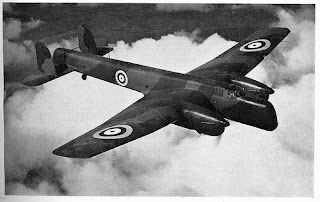The Macchi C.200 Saetta (also variously identified as the MC.200) was a World War II fighter aircraft built by Aeronautica Macchi in Italy, and used in various forms throughout the Regia Aeronautica (Italian Air Force). As with practically every Italian fighter of the period, the design was excellent and the manoeuvrability and general flying characteristics left little to be desired, but it was underpowered and underarmed for a modern fighter.
From the time Italy entered war on 10 June 1940, until her surrender on 8 September 1943, the Macchi C. 200 flew more operational sorties than any Italian aircraft. The Saetta ranged over Greece, North Africa, Yugoslavia, across the Mediterranean and Russia (where it obtained an excellent kill to loss ratio of 88 to 15). Its very strong all-metal construction and air-cooled engine made the aircraft ideal for ground attack and several units flew it as a fighter-bomber. Over 1,000 were built by the time the war ended.
In August 1939 about 30 C.200s, by then nicknamed Saetta ("Arrow"), were delivered to 10 Gruppo of 4 Stormo, stationed in North Africa. Pilots of this "'elite" unit of the Regia Aeronautica opposed the adoption of the C.200, preferring the more manouvrable Fiat CR.42. These Saettas were then transferred to 6 Gruppo of 1 Stormo in Sicily and Gruppo 152 of 54 Stormo in Vergiate. When Italy entered the war on 10 June 1940, 144 Macchis were operational, half of which serviceable. Although the first 240 aircraft had fully-enclosed cockpits, the subsequent variants were given open cockpits at the request of the Italian pilots.
The first Macchi C.200s to make their combat debut were those of the 6° Gruppo Autonomo C.T. led by Tenente Colonnello (Wing Commander) Armando Francois. This Squadron was based at the Sicilian airport of Catania Fontanarossa. A Saetta from this unit was the first C.200 to be lost in combat when on 23 June 1940 14 Macchis (eight from 88a Squadriglia, five from 79a Squadriglia and one from 81a Squadriglia) that were escorting 10 SM.79s from 11 Stormo were intercepted by two Gloster Gladiators. Gladiator N5519, piloted by Flt Lt George Burges, attacked the bombers but was in turn attacked by a C.200 flown by Sergente Maggiore Lamberto Molinelli of 71a Squadriglia over the sea off Sliema. The Macchi overshot four or five times the more agile Gladiator which eventually shot down the Saetta.

Only on 1 November were the C.200s credited with their first kill. A Sunderland on a reconnaissance mission was sighted and attacked just outside Augusta by a flight of Saettas on patrol. With the arrival towards the end of December 1940 of X Fliegerkorps in Sicily, the C.200s were assigned escort duty for I/StG.1 and II/StG.2 Ju 87 bombers attacking Malta, as the Stukas did not have adequate fighter cover until the arrival of 7./JG26's Bf 109s.
On 6 February 1941, the elite unit 4 Stormo received C.200s from 54 Stormo. With the autorotation problems solved, the Macchis were regarded as “very good machines, fast, manoeuvrable and strong” by Italian pilots. After intense training, on 1 April 1941, the 10 Gruppo (4 Stormo) moved to the Ronchi dei Legionari airport and started active service. In combat with the less manoueverable Hurricane, it proved effective, with outstanding dogfight performance and no vices.
General characteristics
- Crew: 1
- Length: 8.25 m (27 ft 1 in)
- Wingspan: 10.58 m (34 ft 8 in)
- Height: 3.05 m (10 ft 0 in)
- Wing area: 16.82 m² (181.00 ft²)
- Empty weight: 1,964 kg (4,330 lb)
- Loaded weight: 2,200 kg (4,840 lb)
- Max takeoff weight: 2,395 kg (5,280 lb)
- Powerplant: 1× Fiat A.74 R.C.38 14-cylinder air-cooled radial engine, 650 kW (870 hp) at 2,520 rpm for takeoff
Performance
- Maximum speed: 504 km/h (313 mph) at 4,500 m (14,765 ft)
- Range: 570 km (354 mi)
- Service ceiling: 8,900 m (29,200 ft)
- Rate of climb: 15.3 m/s (3,030 ft/min)
- Wing loading: 131.7 kg/m² (26.9 lb/ft²)
- Power/mass: 0.286 kW/kg (0.176 hp/lb)
Armament
- 2× 12.7 mm (.5 in) Breda-SAFAT machine guns, 370 rpg
- 8× 15 kg (33 lb) or 2× 50, 100, or 150 kg (110, 220, or 330 lb) bombs
** Macchi C.200 - Warbird Fare









 12/29/2010
12/29/2010
 Warbirdfare
Warbirdfare


















